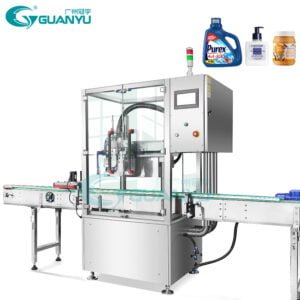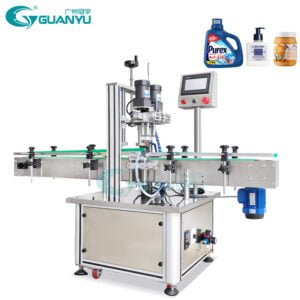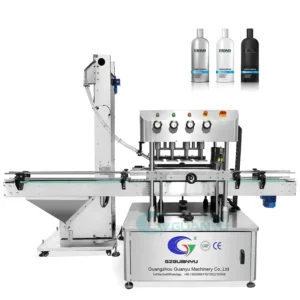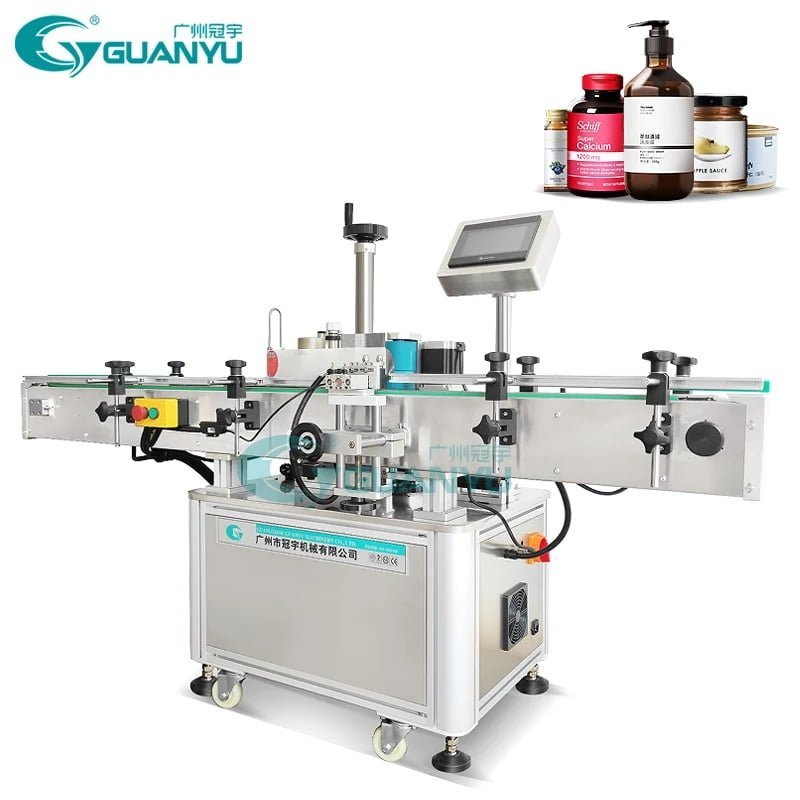مقدمة
آلة السد هي قطعة هامة من المعدات المستخدمة في مختلف الصناعات, مثل الأدوية, الغذاء والمشروبات, مستحضرات التجميل, والمواد الكيميائية. يلعب دورًا حيويًا في الحاويات الختم الآمنة, ضمان سلامة المنتج, ومنع التسرب أو التلوث.
أنواع آلات السد

هناك عدة أنواع من آلات السد المتاحة, تم تصميم كل منها لتلبية متطلبات الصناعة المحددة. وتشمل بعض الأنواع الشائعة:
- آلات السد المسمار: تستخدم هذه الآلات مغزلًا دوارًا لربط الأغطية على الحاويات. يتم استخدامها بشكل شائع للزجاجات ذات الأغطية اللولبية.
- آلات السد بالضغط: تطبق هذه الآلات الضغط على الأغطية الإضافية, يشيع استخدامها للحاويات ذات الأغطية أو الأغطية القابلة للضغط.
- آلات السد المفاجئة: على غرار آلات الضغط على السد, تقوم آلات الأغطية المفاجئة بالضغط على الأغطية الإضافية, ولكنها مصممة خصيصًا للحاويات ذات الأغطية القابلة للتركيب.
- آلات الفلين: تستخدم هذه الآلات لإغلاق الزجاجات بسدادات الفلين, وجدت عادة في صناعة النبيذ.
- آلات الختم التعريفي: تستخدم آلات الختم التعريفي الحث الكهرومغناطيسي لإنشاء ختم محكم على الحاويات ذات الأغطية المبطنة بالرقائق المعدنية. وهي تستخدم عادة في الصناعات الدوائية والغذائية.
مبدأ العمل
يعتمد مبدأ عمل آلة السد على نوعها. لكن, تتضمن العملية الأساسية الخطوات التالية:
- وضع الحاوية: يتم وضع الحاويات في المكان الصحيح على الجهاز, جاهزة للتغطية.
- تغذية الغطاء: يتم تغذية الأغطية في الجهاز إما يدويًا أو تلقائيًا, اعتمادا على تصميم الآلة.
- عملية السد: تطبق الآلة القوة اللازمة أو الدوران لتأمين الغطاء على الحاوية. هذا يمكن أن ينطوي على الشد, الضغط, أو تثبيت الغطاء في مكانه.
- إطلاق الحاوية: بمجرد تطبيق الغطاء بشكل آمن, تقوم الآلة بتحرير الحاوية, مما يسمح لها بالتحرك على طول خط الإنتاج.
فوائد استخدام آلة السد
يوفر الاستثمار في آلة السد العديد من الفوائد للشركات:
- زيادة الكفاءة: تعمل آلات السد على أتمتة عملية السد, مما يسمح بمعدلات إنتاج أسرع ويقلل الحاجة إلى العمل اليدوي.
- نتائج متسقة: آلات السد تضمن الختم المتسق والموحد, التقليل من مخاطر التسربات أو تلوث المنتج.
- تحسين الإنتاجية: من خلال تبسيط عملية السد, يمكن للشركات زيادة الإنتاجية الإجمالية وتلبية الطلب المتزايد.
- انخفاض التكاليف: مع السد الآلي, يمكن للشركات توفير تكاليف العمالة وتقليل هدر المنتج بسبب الختم غير المناسب.
- التنوع: يمكن تخصيص آلات السد لاستيعاب أحجام الحاويات المختلفة, الأشكال, وأنواع الغطاء, مما يجعلها مناسبة لمجموعة واسعة من المنتجات.
العوامل التي يجب مراعاتها عند اختيار آلة السد
عند اختيار آلة السد, من الضروري مراعاة العوامل التالية:
- متطلبات الإنتاج: تحديد معدل الإنتاج المطلوب واختيار الماكينة التي يمكنها تلبية تلك المتطلبات.
- توافق الحاوية والغطاء: تأكد من أن الجهاز متوافق مع الحجم, شكل, ونوع الحاويات والأغطية المستخدمة في الإنتاج الخاص بك.
- مستوى الأتمتة: تقرر ما إذا كان أوتوماتيكيا بالكامل, شبه آلية, أو آلة السد اليدوية مناسبة لاحتياجات الإنتاج الخاصة بك.
- ميزانية: النظر في تكلفة الاستثمار الأولي, مصاريف الصيانة, والعائد المحتمل على الاستثمار.
- الجودة والموثوقية: ابحث عن سمعة وموثوقية الشركة المصنعة للتأكد من أن الماكينة ذات جودة عالية وستعمل بشكل ثابت.
الصيانة والرعاية
لضمان طول العمر والأداء الأمثل لآلة السد, الصيانة الدورية أمر بالغ الأهمية. تشمل بعض مهام الصيانة:
- التنظيف والتشحيم: قم بتنظيف الماكينة بانتظام واستخدم التشحيم المناسب للأجزاء المتحركة وفقًا لتوصيات الشركة المصنعة.
- التفتيش والاستبدال: قم بفحص الماكينة بانتظام بحثًا عن أي أجزاء تالفة أو تالفة واستبدلها على الفور.
- تدريب المشغلين: تدريب المشغلين على التشغيل السليم للآلة, إجراءات الصيانة, وبروتوكولات السلامة.
- حفظ السجلات: الاحتفاظ بسجل لأنشطة الصيانة, مثل التنظيف, تشحيم, واستبدال الأجزاء, لضمان الصيانة في الوقت المناسب وبشكل متسق.
خاتمة
تعد آلة السد استثمارًا أساسيًا للشركات في الصناعات التي تتطلب إغلاقًا آمنًا وفعالًا للحاويات. من خلال فهم الأنواع المختلفة, مبادئ العمل, وفوائد آلات السد, فضلا عن النظر في العوامل الهامة عند اختيار واحد, يمكن للشركات اتخاذ قرارات مستنيرة لتعزيز عمليات الإنتاج الخاصة بها وضمان سلامة المنتج.




